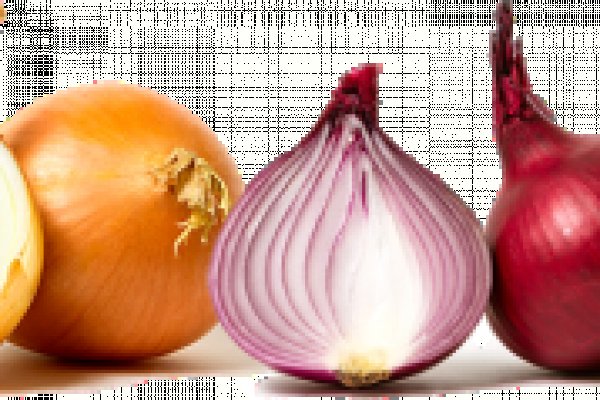Гидра и кракен

Покупателю остаются только выбрать "купить" и подтвердить покупку. Ждем ваших заказов! В нашем автосалоне в Москве вы можете купить. Тем не менее, для iOS существует великолепное приложение Tor. Танки Онлайн сайт первый многопользовательский браузерный 3D-боевик. Логин или. Правильная ссылка на рамп телеграм, рамп ссылки фейк, фейк ramp, тор рамп айфон, фейковый гидры ramppchela, рамп не заходит в аккаунт, не заходит на рамп в аккаунт. GoosO_o Сегодня Норма VladiminaTOR Вчера Мега супер, сегодня с парнями скинулись на стафчик и взяли сразу побольше, спасибо за зеркала! Инструкция по применению, отзывы покупателей, дешевые. Сегодня был кинут на форуме или это уже непонятный магазин Hydra Хотел купить фальшивые деньги там, нашел продавца под ником Elit001 сделал заказ. «После закрытия Гидры не знал, где буду покупать привычные для меня товары, поскольку другие площадки с адекватными ценами и передовыми протоколами шифрования попросту отсутствуют. Всё, что надо знать новичку. Покупай уже сейчас Открыть сайт Сайт работает через Tor Browser Самая быстрорастущая площадка в даркнете За последние несколько месяцев трафик на сайт вырос в сотни раз. Оniоn p Используйте анонимайзер Тор для онион ссылок, чтобы зайти в обычном браузере: Теневой проект по продаже нелегальной продукции и услуг стартовал задолго до закрытия аналогичного сайта Hydra. Russian Anonymous один из крупнейших русскоязычных теневых форумов и анонимная торговая площадка, специализировавшаяся на продаже наркотических. Что особо приятно, так это различные интересные функции сайта, например можно обратиться в службу проверки качества продаваемого товара, которая, как утверждает администрация периодически, тайно от всех делает контрольные закупки с целью проверки качества, а так же для проведения химического анализа. Уже! Уводят аккаунт при обмене. В ТОР! Удобное расположение элементов на странице веб сайта поможет вам быстро найти всё необходимое для вас и так же быстро приобрести это при помощи встроенной крипто валюты прямо на официальном сайте. Сообщество HydraGrief ВКонтакте 3 подписчика. Кларнеты Евгений Бархатов, Игнат Красиков. Продажа подержанных авто и новых. Во-первых, наркотики зло. Обзор облачного сервиса хранения файлов. Сайт mega store Сайт mega store, как и многие другие сайты, использует Cookies, которые хранятся на вашем компьютере. Если же данная ссылка будет заблокированная, то вы всегда можете использовать приватные мосты от The Tor Project, который с абсолютной точностью обойдет блокировку в любой стране. Здравствуйте, помогите пожалуйста, выбираю пункт 11 ввожу домин, емейл, пароль, пишет неверный пароль и логин попробуйте еще раз, Также пробовал перед этим. Как мы знаем "рынок не терпит пустоты" и в теневом интернет пространстве стали набирать популярность два других аналогичных сайта, которые уже существовали до закрытия Hydra. Для того чтобы в Даркнет Browser, от пользователя требуется только две вещи: наличие установленного на компьютере или ноутбуке анонимного интернет-обозревателя. Ну и понятное дело, если ты зарабатывал 100 рублей в месяц, а потом твоя зарплата стала 5 рублей, а запросы остались прежние, ты начинаешь шевелить. Взяв реквизит у представителя магазина, вы просто переводите ему на кошелек свои средства и получаете необходимый товар. Там есть все: документация на все случаи осаго; водительские удостоверения; акцизные марки; дипломы com учебных заведений; дебетовые карты всех существующих банков; получение гражданства; сим-карты всех операторов связи; множество схем самого разного заработка. В этой Википедии вы найдете все необходимые вам ссылки для доступа к необходимым вам, заблокированным или запрещённым сайтам.
Гидра и кракен - Кракен ссылка работает
стоит переходить. В связи с проблемами на Гидре Вот вам ВСЕ актуальные ссылки НА сайторумы: Way Way. Wp3whcaptukkyx5i.onion - ProCrd относительно новый и развивающийся кардинг-форум, имеются подключения к клирнету, будьте осторожны oshix7yycnt7psan. Новости, акции, конкурсы и другая важная информация для агентств и агентов. Onion - Архив Хидденчана архив сайта hiddenchan. 2 Как зайти с Андроид Со дня на день разработчики должны представить пользователям приложение Mega для Android. Крупнейшая онлайн-площадка по продаже наркотиков прекратила свою. Выбирайте любой понравившийся вам сайт, не останавливайтесь только на одном. Zerobinqmdqd236y.onion - ZeroBin безопасный pastebin с шифрованием, требует javascript, к сожалению pastagdsp33j7aoq. Если же вы хотите обходить блокировки без использования стороннего браузера, то стоит попробовать TunnelBear. Гарантия возврата! Прекратим о грустном. Тем не менее, для iOS существует великолепное приложение Tor. Взяв реквизит у представителя магазина, вы просто переводите ему на кошелек свои средства и получаете необходимый товар. Теперь о русских сайтах в этой анонимной сети. Наберитесь терпения и разработайте 100-150 идей для своего проекта. Жека 3 дня назад Работает! Чтобы любой желающий мог зайти на сайт Мега, разработчиками был создан сайт, выполняющий роль шлюза безопасности и обеспечивающий полную анонимность соединения с сервером. Итак, скачать Tor Browser Bundle проще всего с наших страниц. Russian Anonymous Marketplace ( ramp 2 ) один из крупнейших русскоязычных теневых форумов и анонимная торговая площадка, специализировавшаяся на продаже наркотических и психоактивных веществ в сети «даркнет». Но обещают добавить Visa, Master Card, Maestro. Первое из них это то, что официальный сайт абсолютно безопасный. Дизайн необходимо переработать, или навести порядок в существующем. Наглядный пример: На главной странице магазина вы всегда увидите первый проверочный код Мега Даркнет, он же Капча. Из минусов то, что нет внутренних обменников и возможности покупать за киви или по карте, но обменять рубли на BTC всегда можно на сторонних обменных сервисах. Правильная! Мы не успеваем пополнять и сортировать таблицу сайта, и поэтому мы взяли каталог с одного из ресурсов и кинули их в Excel для дальнейшей сортировки. И так, несколько советов по фильтрации для нужного вам товара. Гидра правильная ссылка.

Основные особенностиУдобствоПростой дизайн не дает запутаться и сделает пребывание на сайте удобным и простымБыстродействиеНаша платформа написана с нуля и заточена под максимальную нагрузкуБезопасностьСложная система шлюзов, мостов, onion роутинга позволяет достичь максимальную безопасность и анонимностьВойти на сайта omg onion прямо сейчасСсылка представленная ниже безопасна и анонимнаВход на сайт ГидрыКак пользоваться Сайтом1Создайте аккаунтДля этого необходимо открыть страницу регистрации, заполните обязательные поля и нажмите кнопку "зарегистрироваться"2Выбор товаровВашему вниманию представлена прекрасная система навигации с переходами по категориям3Пополните кошелекBitcoin кошелек можно пополнить как переводом с другого кошелька, так и через встроенные обменники4Оплатите и получите товарЗайдя в необходимый товар, нажмите кнопку оплатить, вам будут отправлены данные о местоположение товара и тд5НаслаждайтесьМы надеемся на то, что наш маркет доставит вам максимальное удовольствиеFAQОстались вопросы?Как безопасно пользоваться omg?Наши программисты - лучшие специалисты по кибербезопасности, самые передовые технологии обеспечивают 100% анонимность и безопасность.Что делать если сайт не открывается?Не секрет что с недавних пор роскомнадзор и правительство активно взялось за интернет и приватность в частности, поэтому для наибольшей защиты мы создали несколько официальных зеркал нашего сайта, если какое-то зеркало не работает, пробуйте другоеКак войти на omg онион?Для этого нужно просто перейти по официальной ссылкеЧто делать если я не получил купленный закладку?Действительно из-за некоторых людей, которые занимаются поиском чужих товаров, такая история возможна, после покупки вы имеете 24 часа на жалобу, в данном случае администрация omg в срочном порядке рассмотрит вашу жалобу и честно разрешит возникший спор.Описание веществМарихуана (Каннабис)В зависимости от сорта (индика/сатива) вызывает различные ощущения.По эффекту воздействия при курении индика и сатива различаются – если индика вызывает заторможенность, снижение активности, сильное расслабление, то сатива наоборот, стимулирует всплеск энергии, поднимает настроение и провоцирует на активные действия.Оба этих сорта использовались в медицинских и лекарственных целях. Сорта конопли с высоким содержанием индики преимущественно служат избавлением от бессонницы и болей, поэтому часто применяются перед сном. Семена конопли индики имеют сниженный процент содержания ТГК.Обратное действие сативы – стимулирующее и активизирующее внутренний потенциал – нашло применение при лечении стресса, депрессий, повышенной тревожности.Основной сайт ПерейтиЭйфоретики (МДМА, Мефедрон)МДМА (Экстази)Эффекты MDMA проявляются через 30-60 минут после употребления, а пик наблюдается через 75-120 минут, плато длится 3,5 часа.7) Кратковременные психоактивные эффекты MDMA включают:Усиление ощущений, восприятия или сексуальностиУсиление ощущений, восприятия или сексуальностиУсиление ощущений, восприятия или сексуальностиОщущение внутреннего умиротворенияУвеличение социальной активности и коммуникабельностиЭйфория – ощущение чувства удовлетворения и счастьяСписок зеркал ПерейтиМефедронМефедрон вызывает эйфорию, стимулирующий эффект, способствует более чувственному пониманию музыки, улучшает настроение, снижает враждебность, вызывает улучшение умственной способности и оказывает легкую сексуальную стимуляцию; эти эффекты аналогичны эффектам кокаина, амфетамина и МДМА, и длятся разное количество времени, в зависимости от способа введения вещества. При пероральном приеме, покупатели сообщали о возникновении эффекта в течение 15-45 минут; при вдыхании последствия наступали в течение нескольких минут и достигали пика в течение 30 минут. При приеме внутрь или через нос эффект длится от двух до трех часов.ПерейтиПсиходелики (ЛСД, грибы)ЛСДВозникает ощущение того, что вся окружающая обстановка как будто «плывет и дышит», постоянно меняясь. За закрытыми глазами появляются необыкновенные сменяющиеся разноцветные узоры. Ощущается сильный прилив энергии, подъем настроения и повышение активности мышления.Ссылка ПерейтиГрибыГрибы повышают самосознание и чувство контакта с «Трансцендентным Другим» – добавляя более глубокое понимание нашей связи с природой. Психоделические препараты могут вызывать состояния сознания, которые имеют личный смысл и духовное значение у религиозных или обладающих духовными наклонностями людей; эти состояния называются мистическими переживаниями.Информация ПерейтиВнимание!Участились случаи мошенничества, рекомендуем добавить сайт в закладки чтобы не потерять его.Добавить в закладкиgodnotaba-omg.comCopyright © 2015 — 2021. Все права защищены.
Вся информация представлена в ознакомительных целях и пропагандой не является.ОМГ сайт Загрузка, ждите... omgqe3pkwqw4af.onion - открывается через тор браузер